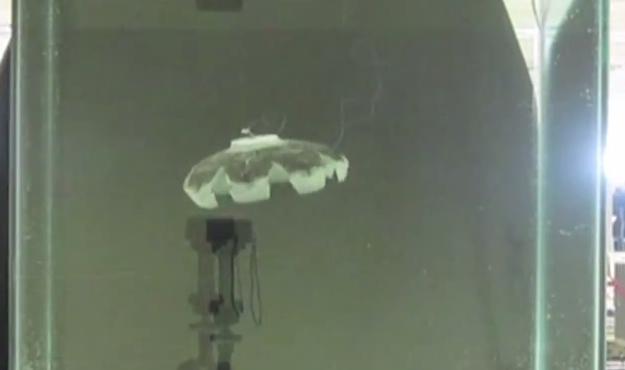 Researchers at Virginia Tech and The University of Texas at Dallas have unveiled Robojelly, a robotic jellyfish which not only closely resembles and moves like the real thing, but uses hydrogen as its main source of power, and therefore could potentially never run out of energy.
Researchers at Virginia Tech and The University of Texas at Dallas have unveiled Robojelly, a robotic jellyfish which not only closely resembles and moves like the real thing, but uses hydrogen as its main source of power, and therefore could potentially never run out of energy.
Robojelly has been made using “smart” materials, in this case a body constructed using an alloy that remembers its shape, enabling the ‘bot to flex its bell-shaped body to generate movement underwater.
Carbon nanotubes coated with platinum are built into the surface, and the chemical reaction between this and the hydrogen and oxygen in the water produces heat, which is then converted into energy to move Robojelly’s “muscles.”
The result is its body flexes in the same way as a normal jellyfish, propelling it forward in the water. As it’s surrounded by its primary source of power, it has the potential to keep on going without any interference or alternative means of creating energy.
It’s believed to be the first successful project to use hydrogen to power an underwater robot.
In a short video released by the team you can see Robojelly moving around in a tank, where it’s powered by electricity rather than hydrogen, and although it looks very impressive, it’s not quite ready for the sea just yet.
At the moment all the panels on its body move together, making direction changes difficult, and the next stage in the robot’s development is to figure out how to move each panel individually.
Once this has been achieved, and Robojelly can freely roam the seas, it’s likely to be used for underwater search and rescue missions.



